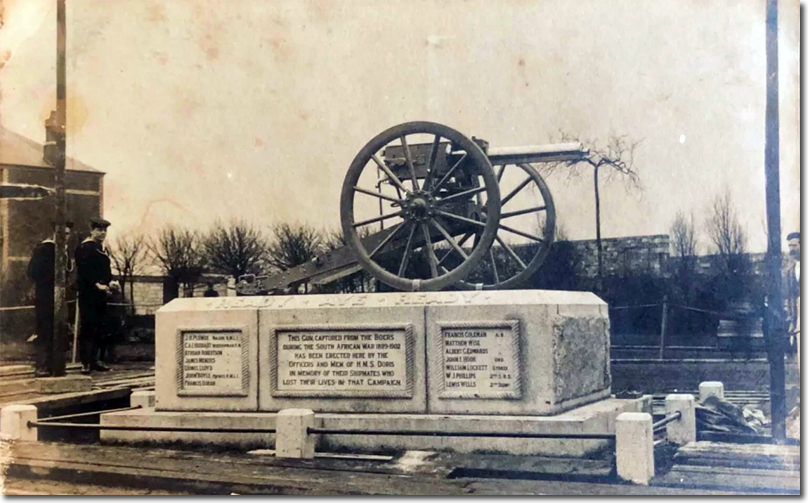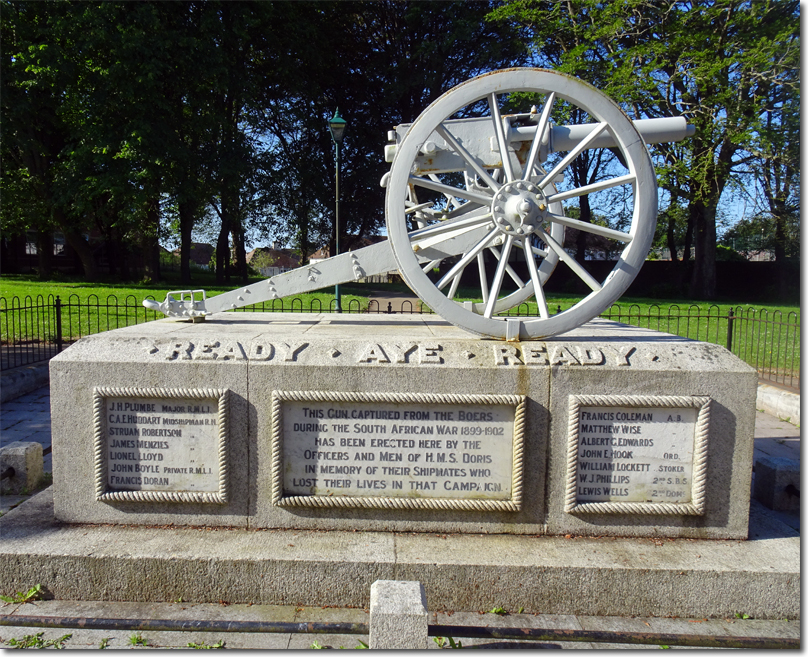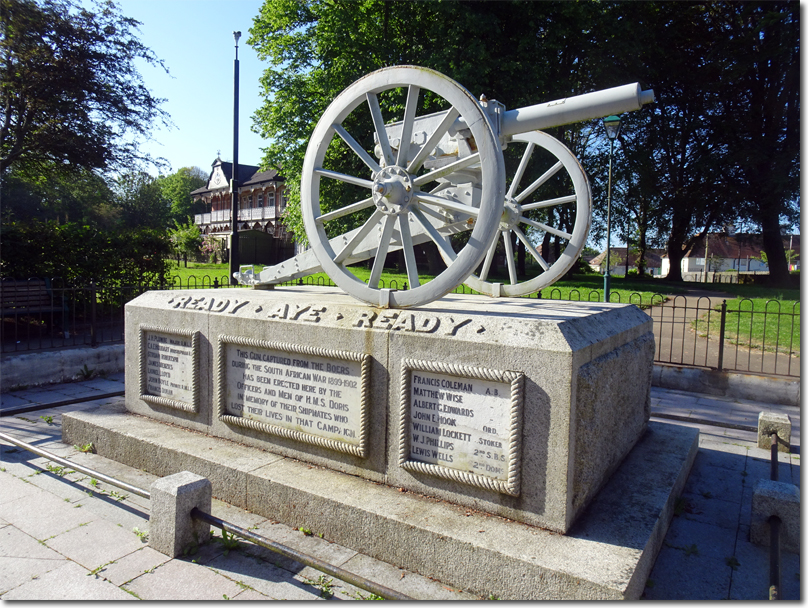|
|


|
|
Memorial to the seamen from HMS Doris
who died during the South African Boer War,
1899-1902. During this war, Royal Navy sailors formed 'Naval
Brigades' and transported large naval guns
hundreds of miles inland in order to provide artillery support alongside
the Army. This Memorial includes a British
made Pom Pom Maxim gun, which was captured from
the enemy Boers. It is located at Devonport Park.
Erected in 1904 by Harry Hems. Polished granite plinth on base, rectangular with white marble inscription panels bordered by cable moulding; chamfered arris at top inscribed with the words 'Ready-Aye-Ready'. Surmounted by the field gun brought from the Boer War. It was erected as a memorial to the crew of HMS Doris who died fighting in South Africa alongside the army at the Battle of Paardeberg. This gun was captured from the Boers and dragged the distance of 800 hundred miles back to their ship HMS Doris. In 1901 HMS Doris returned to Devonport to a heroic welcome and the crew decided there should be a memorial to the sailors who died in the battle. The memorial was unveiled in 1904 by Admiral E. H. Seymour. It was exploits like that of this gun alongside those being rushed from HM Ships to Ladysmith provide the origins of the Royal Navy field gun competitions. |

|

|

|
Empire in Your Backyard: Plymouth Article
Armed Forces | Art and Culture | Articles | Biographies | Colonies | Discussion | Glossary | Home | Library | Links | Map Room | Sources and Media | Science and Technology | Search | Student Zone | Timelines | TV & Film | Wargames